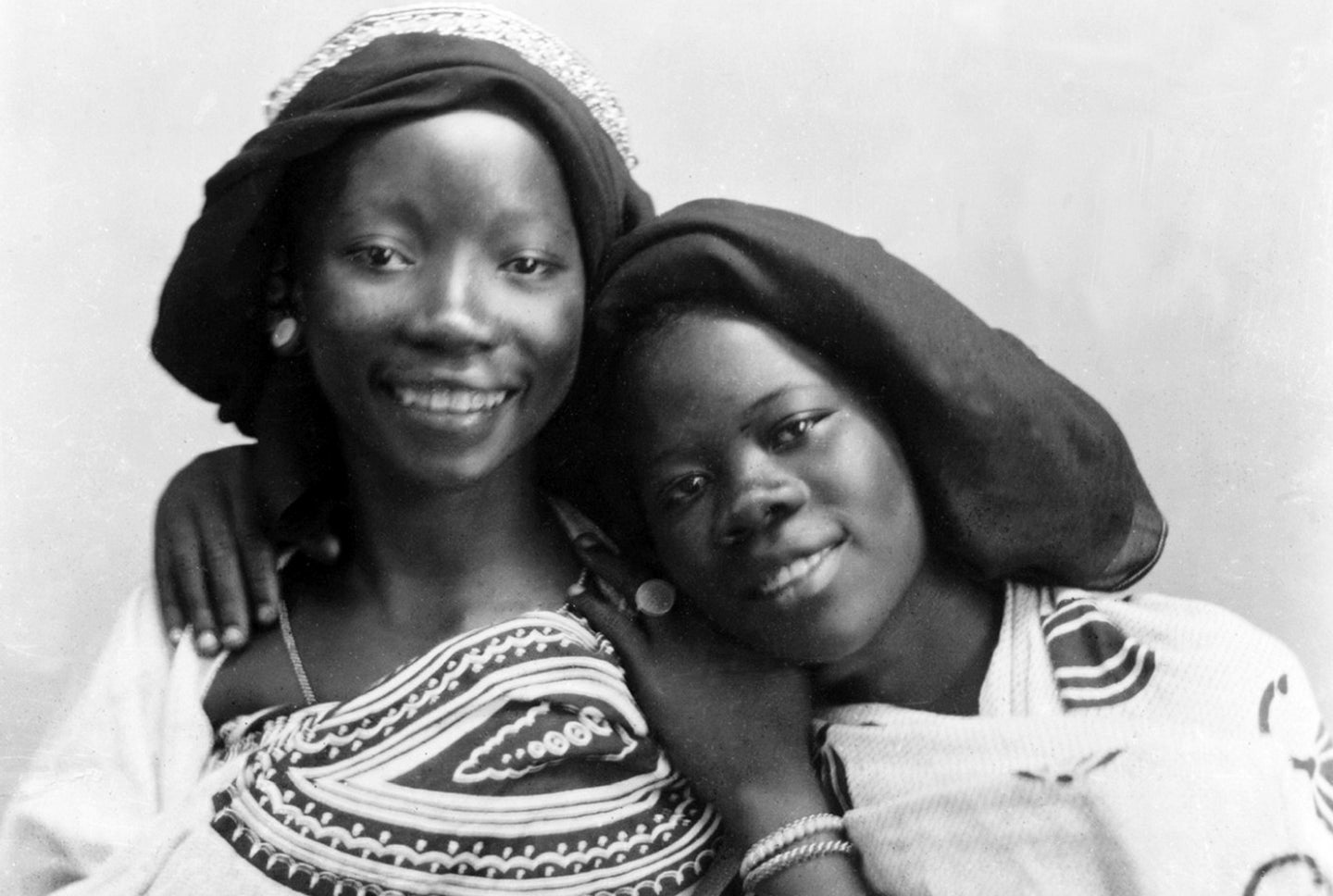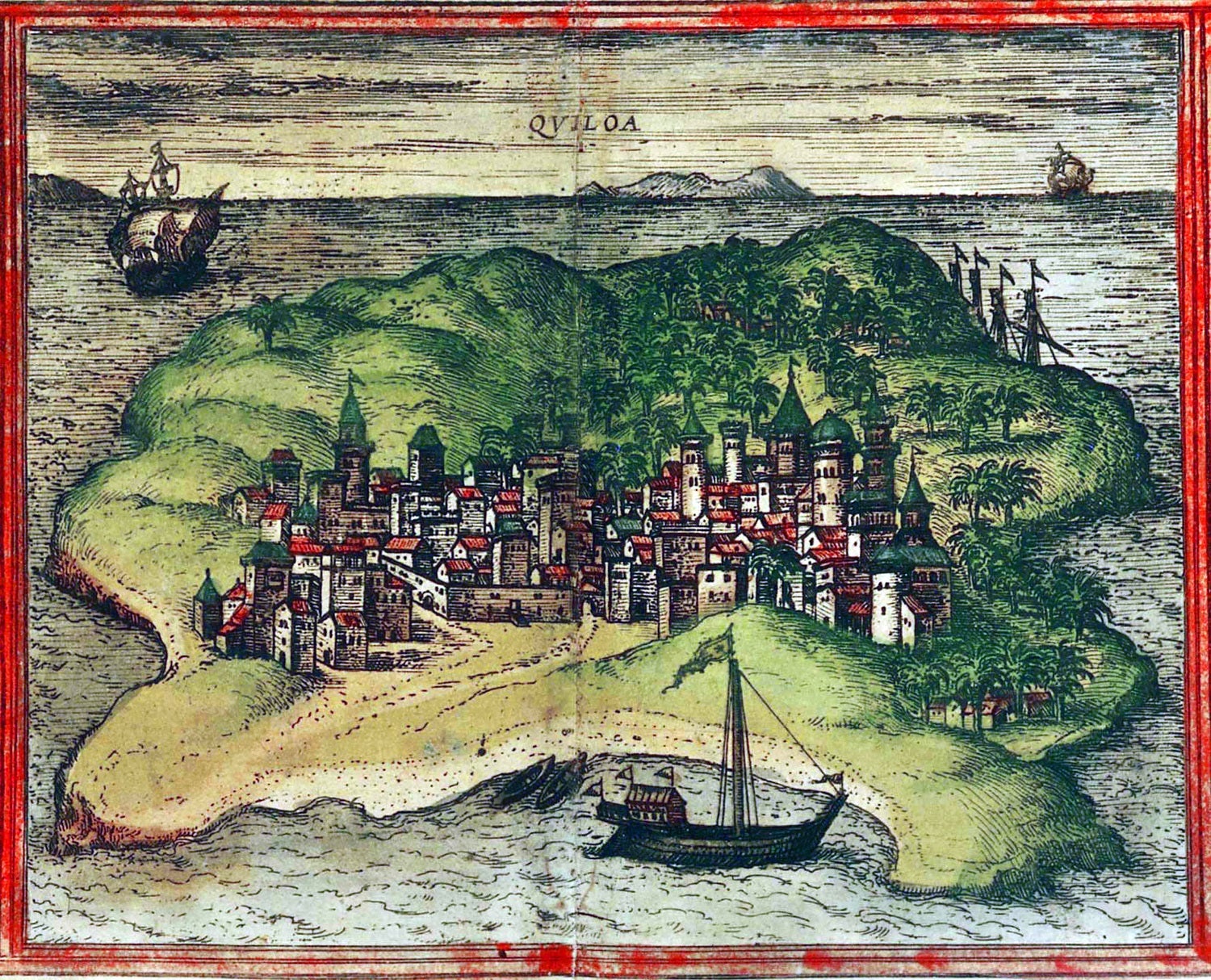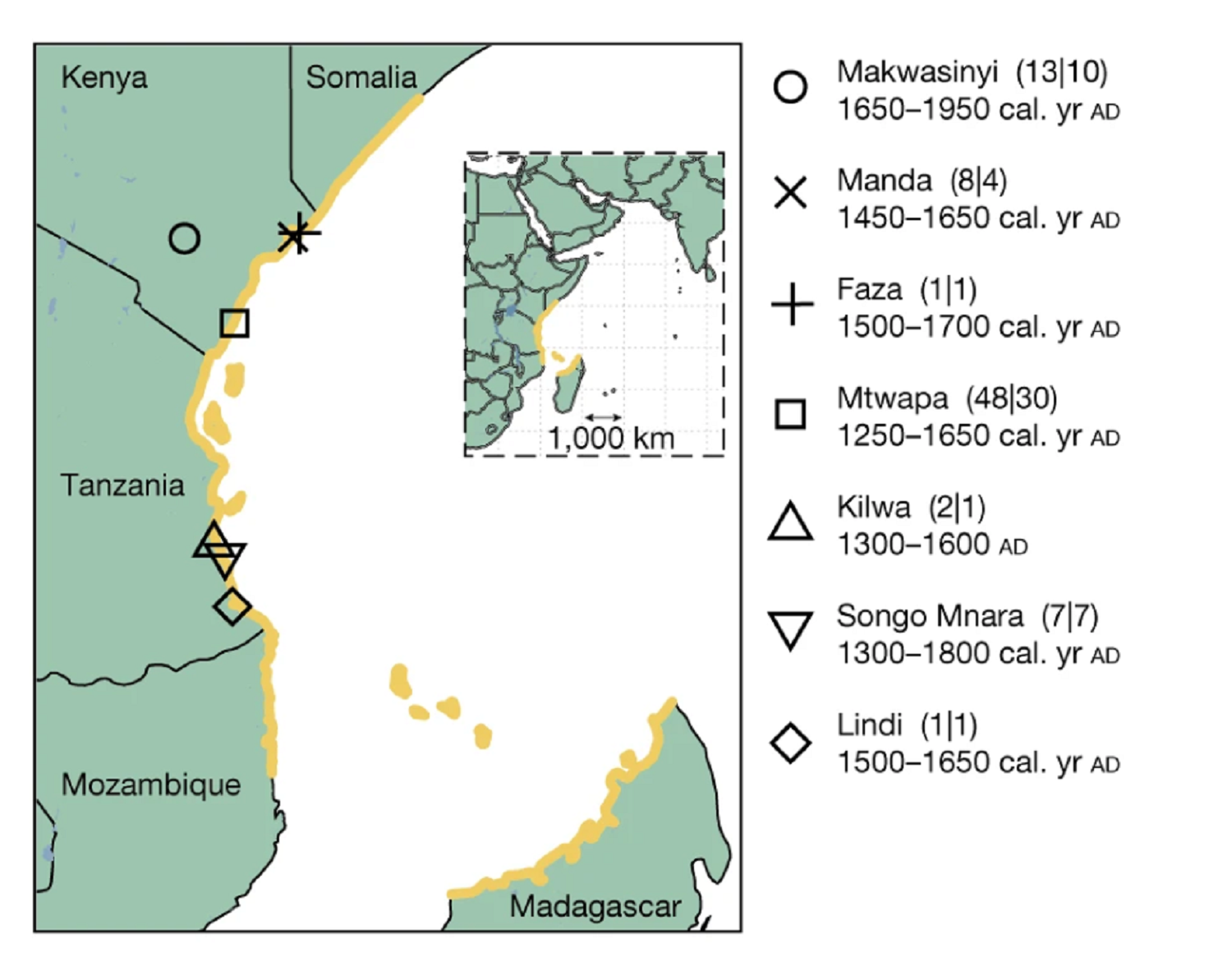
In the 10th century, or so the story goes, seven Persian princes fled their homeland and traveled on seven ships, eventually landing on the shores of East Africa. Each prince founded a town across this stretch of land known as the Swahili Coast. Today, people who identify as Swahili view this legend as an origin story that explains their diverse heritage.
But there’s also debate over how real this legend is. Now, a team of scientists argue that this challenged history has caused us to overlook a critical cultural connection between two continents.
A new analysis of ancient DNA reveals this connection between Africa and Asia is very real. In a study published today in the journal Nature, scientists show that people living more than 800 years ago on the Swahili coast had an intertwined African and Asian ancestry. This suggests a multiracial identity shaped early Swahili culture and brings a new understanding of the past to the people who are Swahili today.
In regards to understanding exactly how Swahili culture was formed, “they are a people without a history,” says Chapurukha Kusimba, a professor of anthropology at the University of South Florida and senior author of the study. “We have partially resolved the issue of who were the ancestors of the Swahili people and who built this great African civilization.”
One reason why this Africa-Asia connection was originally doubted is that the tale of the seven Persian princes was not recorded until the early 1500s. There are various versions of the story, and research suggests it’s possible that these contain the storytellers’ biases. Additionally, some Eurocentric archaeologists doubted Africans transformed the Swahili coast into vibrant port cities, and their prejudice caused them to venture that the cities were built by Europeans. Lastly, other African natives have accused wealthier Africans of exaggerating or lying about their connections to Asia to elevate their social status, says Kusimba.
[Related: Crystals and eggshells tell a 105,000-year-old story of humans in the Kalahari Desert]
To come to this conclusion, the study team received permission from local Swahili people to excavate cemeteries along the coast of East Africa where the first Swahilis lived. The team took DNA samples from the skeletal remains of 80 individuals estimated to have lived between 1250 and 1800 CE. They then compared the DNA sequences to the DNA of present-day coastal Swahili speakers and to a database containing the genetics of other Eurasian and Eastern African groups. The bodies were then reburied in their respective burial sites.
The genetic analysis of the ancient DNA revealed a mixture of both African and Asian populations. About 80 to 90 percent of Asian DNA could be linked to Persia. The remaining 10 percent came from Indian ancestors. This suggests that intermarrying was happening by at least 1,000 CE, long after Africans first built the port towns where merchant trades took place.

At this point in history, intermingling with other cultures was not an isolated event—it was happening in multiple locations across Eastern Africa. The study team also analyzed the DNA of modern people living in Kenya and Tanzania, and found that they also showed evidence of both African and Asian ancestry. This discovery made sense to the researchers, who expected that people of mixed Indian and Persian ancestry traveled beyond the coast and formed relationships with other local African groups.
“We could see that there was this mixture between Africans and Asians happening at least two locations along the coast and possibly even more,” says lead author Esther Brielle, a postdoctoral fellow in the genetics and genomics department at Harvard University.

Brielle says they had ample DNA samples to compare the genetics of people living in present-day Kenya and Tanzania. The genetic findings showed similar results of Asians having relations with local African groups.
Overall, most of the DNA coming from Asian ancestry was inherited from men, while the African ancestry stemmed primarily from women. Brielle says the findings make sense because Swahili society was heavily involved in the Indian Ocean trading network, causing them to have a constant foreign presence on the coastline. Back in those days, traveling merchants were predominately male.
The study authors note that while in other parts of the world, similar genetic signatures suggest that men forcibly married local women, they don’t think this is what happened here. A hallmark of Swahili culture is following a matriarchal society and Persian men likely married into local trading families and adopted their customs. Kusimba thinks women had some choice over who they married, and it was appealing to marry these wealthy men from abroad.
“While archaeologists, historians, and linguists have long suspected such intermarriages took place, this is the first time well-dated data, in the form of ancient DNA signatures, have been assembled the necessary empirical support for these suppositions,” says Paul Lane, an archaeologist at the University of Cambridge who was not affiliated with the study.
[Related: Eastern Africa’s oldest human fossils are more ancient than we realized]
However, interactions with foreigners may have differed depending on an ancient person’s social status. Matthew Pawlowicz, an archaeologist at Virginia Commonwealth University who was not a part of the study, points out that most of the samples of ancient DNA came from elite Muslim cemeteries. A broader socioeconomic sample would have helped with understanding the diversity of medieval Swahili people who may have lived outside of stone houses or who did not directly engage with merchants in the Indian Ocean trade network.
Kusimba tells PopSci he plans to excavate other burial sites to provide a more diverse genetic picture of ancient Swahili people and understand why most of these cities collapsed around the 16th century. Ultimately, this work shows us the value of immigration and how refugees can contribute to the cultural diversity of a country.
“You have African communities welcoming people who are in need, giving them a place to live, and intermarrying with no problems,” says Kusimba. “These people are African people, but can trace their ancestry to many parts of the world.”
The post Ancient DNA confirms Swahilis’ blended African and Asian ancestry appeared first on Popular Science.
Articles may contain affiliate links which enable us to share in the revenue of any purchases made.
from Popular Science https://ift.tt/JwUWkKY




0 Comments